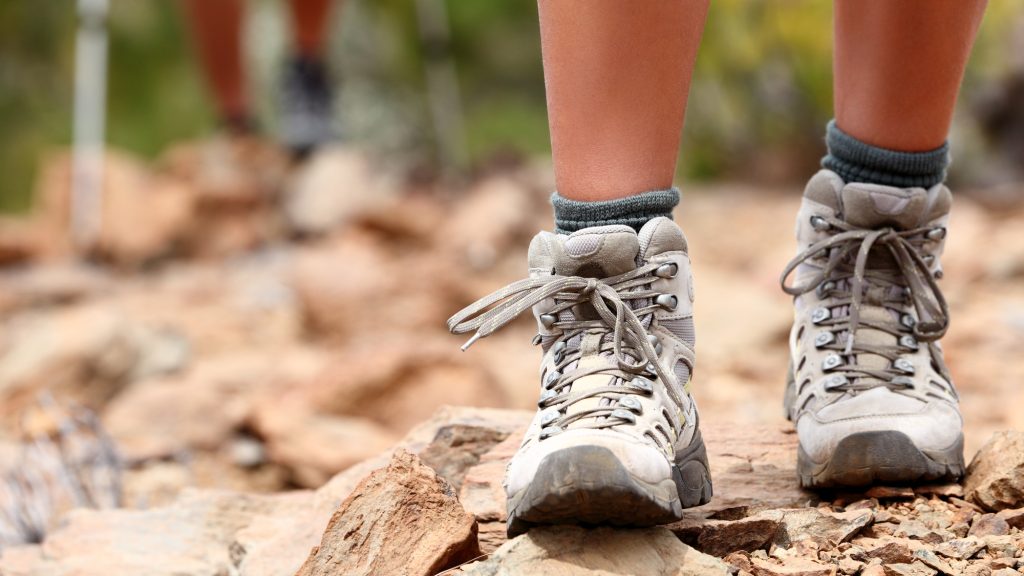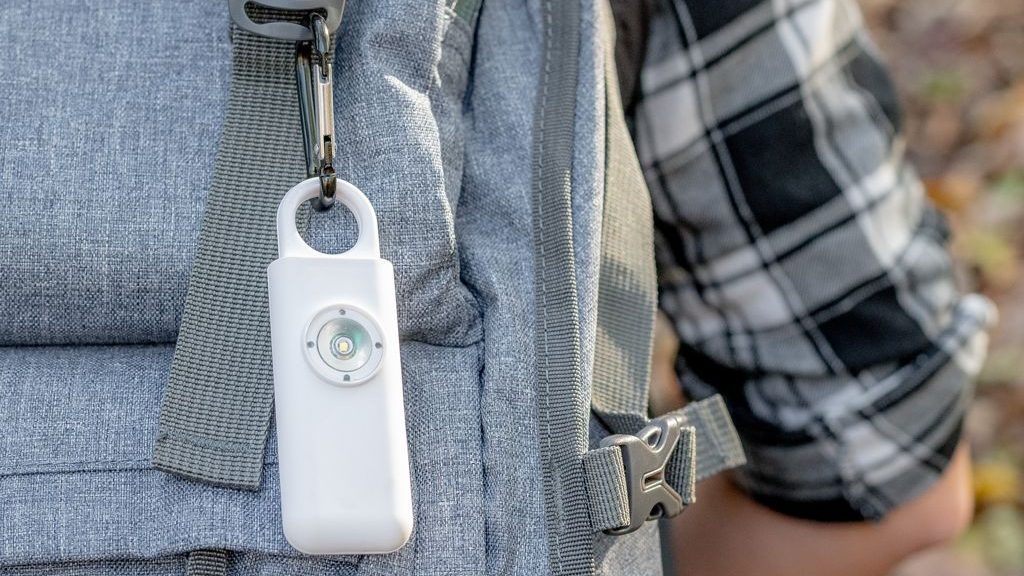
When packing gear for a hiking adventure, many essentials immediately come to mind such as water, food, first aid kit, and bug spray. However, the type of hike you’ve challenged yourself with is a critical consideration in what you pack and what you wear. For example, an easy 2-mile hike on a heavily-trafficked trail won’t require a two-day food supply or rugged boots, while a hike with 8,000 feet of elevation and rugged terrain calls for careful consideration of food and safety. From body-fueling food to a personal safety device, let’s explore what you should pack before heading out on your next hike.
Water
When it comes to filling up a water bottle for a hiking excursion, there’s a simple formula to follow to make sure you’re bringing along enough to stay hydrated. For adults, plan on 2 cups of water for every hour of hiking. If children are coming along, plan on 1-2 cups of water for them for every hour of hiking. Therefore, a 5-hour hike means you should have at least 10 cups of water per person.
Food
The type of food you bring along should be carefully planned to help you stay energized. This means choosing nutrient-dense foods over sugary snacks, which offer only quick spurts of energy. Instead, choose proteins, complex carbohydrates, and healthy fats, which are all digested slowly and therefore provide a steady stream of energy.
Ideal foods to pack include:
- Seed-based nutrition bars
- Protein bars
- Trail mix
- Mixed nuts
- Apples with peanut butter
- Dried fruits
Don’t Forget! >> Always pack a plastic bag to collect your garbage. Every hiker should adhere to the “leave no trace” mentality, which means you carry out everything you carried in—even if it’s food wrappers.

Footwear
Of the utmost importance in hiking is proper footwear. An enjoyable hike can quickly turn into a big regret if your feet start hurting only one mile into a 5-mile hike. Selecting the wrong footwear can also be dangerous if the trails are rocky or slick. When it comes to outfitting your feet, a short, causal hike on even terrain might only require sneakers with good tread. However, rocky terrain, steep inclines, and wet trails are best navigated in a quality pair of hiking boots with deep treads to safely grip the trail. For the best ankle support, opt for high-cut hiking boots over low-cut models.
Don’t Forget! >> Socks are part of feet comfort while hiking, too! If it’s a warm-weather season, choose a breathable, light sock with medium cushion. For cold-weather hiking, go for tightly-woven socks with heavy padding that are made with a synthetic blend or all synthetic. This type of sock provides better insulation and lasting warmth.
Appropriate Clothing
There are countless options for hiking-appropriate clothing, from sun-blocking shirts to heat-trapping hats. How you dress depends on your geographic area, season, length of hike, and terrain.
Clothing options should be carefully considered, as a poor choice could leave you too hot, too cold, or sunburned. For hot weather hiking or a challenging hike requiring steady exertion, choose a wicking short-sleeved t-shirt to make sure you don’t overheat. Wicking long-sleeved shirts are also an option for Spring and Fall hiking when you might be starting your hike in cooler temperatures. If hiking in fairly open space on a sunny day, a long-sleeve UPF-rated shirt is ideal to avoid sunburn. Some even have a flip-up collar to protect the back of your neck. Hats are also an important consideration when selecting clothing for a hike. A ventilated hat will protect you from the sun while still allowing heat to escape. In colder temps, pack a wool or synthetic hat to insulate your head and trap valuable heat so your body temperature doesn’t drop.
Don’t Forget! >> Always check the weather forecast before heading out. This will help determine if you need to dress in layers, need a UPF-rated shirt, or should pack a poncho
to stay dry. Being aware of the weather forecast will also help you determine the best hours to hike, to either avoid the hottest part of the day or a storm system coming through the area.
Personal Safety
Hiking is a rewarding experience for anyone who loves adventuring, providing much-needed time enjoying Mother Nature. However, hiking also comes with risks in terms of animal encounters and injury. This is especially relevant when solo-hiking, when you don’t have the advantage of a companion to assist. An often-overlooked item that should be added to your list of must-haves for your backpack is a personal safety device. The reason is twofold—scaring off wildlife and attracting attention in case of an emergency. In the event you find yourself face-to-face with wildlife, a personal safety device with an alarm will send an animal running in the opposite direction. If injured, using the alarm can attract attention and guide help to your location.

Don’t Forget! >> Make sure the personal safety device you choose is small, lightweight, and easily-accessible. Check out Hootie, which has a 130-decible alarm that can be heard up to 1,000 feet away. It also features a LED strobe light that be seen in both daylight and at night. With the battery lasting up to a year, you can attach Hootie to your backpack or carabiner and have it ready to go and easily accessible on every hike.
First Aid Kit
The contents of your first aid kit are contingent on the type of hike you’re doing. A short, easy family hike requires just a basic first aid kit with Band-Aids, gauze, and antiseptic wipes. Since getting back to your vehicle from this type of hike is fairly quick, any additional first aid needed
can be given off the trail, so plan for basic provisions. When adventuring on a larger scale, a more thorough first aid kit is needed since rugged terrain can mean more significant injuries. Be sure it includes Band-Aids in various sizes, gauze, antiseptic wipes, steri-strips, Ace bandage, tourniquet, medical tape, gloves, tweezers, and an
emergency blanket.
Don’t Forget! >> A multi-tool serves many purposes in The Great Outdoors, and can complement your first aid kit. They usually include a knife, serrated edge, or small scissors that can be used to cut gauze or bandages, so add one to your packing list. Also, if you or your fellow hikers have any allergies—such as a reaction to bee stings—be sure your first aid kit also includes an EpiPen®.
Miscellaneous Necessities
While the above items are necessities for every hike, don’t forget the smaller items that can help in a pinch and won’t add too much weight to your backpack. Miscellaneous items to consider include:
- Flashlight or headlamp with extra batteries in case your hike takes longer than expected
- Flint or fire starter in case you unexpectedly get stuck overnight
- Water treatment or backpacking water filter in case you run out of water
- Bug spray
- Sunscreen
- Bear spray
Conclusion
Before heading out on any hiking adventure, be sure to properly assess every possible scenario. Check the temperature range for the duration of your hike, review a trail map to understand elevation and terrain, and always communicate your plans and destination to a friend or family member. While hiking is a healthy and fun way to enjoy the outdoors, safety is of the utmost importance.
